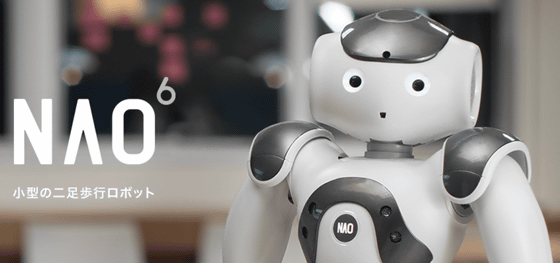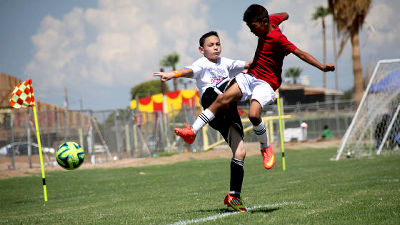A robot that efficiently teaches children how to write letters is developed

By
An experiment was conducted to incorporate an educational system that teaches how to write characters into the NAO robot of Softbank Robotics . NAO, which incorporates an educational system, not only improved the writing skills of children, but more than 90% of children who took classes using NAO replied that “teaching with robots is fun”.
Children Teach Handwriting to a Social Robot with Different Learning Competencies | SpringerLink
https://link.springer.com/article/10.1007/s12369-019-00589-w
A social robot to enhance children's handwriting skills
https://techxplore.com/news/2019-10-social-robot-children-skills.html
With the widespread use of PCs and smartphones, the need for handwriting characters is decreasing. However, there are several research results that 'if you write letters, you can remember the contents of what you write well.'
Is it necessary for children to write letters? -GIGAZINE

by
However, since the act of “writing letters by hand” requires multiple abilities such as cognitive ability, motor function, and perception, a considerable amount of practice is required. And to check the practice, the teacher must spend a lot of effort.
To automate that teach how to write the letter, of the Swiss Federal Institute of Technology Lausanne CHILI Institute of the University of Lisbon in Portugal GAIPS Institute joint research team, the Softbank robotics humanoid robot 'NAO', interactive character to Built-in system to teach how to write.
NAO | Softbank Robotics
https://www.softbankrobotics.com/jp/product/nao/

This system has a form like 'Finding mistakes', such as 'NAO writes characters on the monitor that contain mistakes in line connection and part size ratios, etc.' In the educational system, rather than NAO teaching you how to write letters, “Children teach NAO how to write letters”. The characters written by NAO are designed to include mistakes that are easily made by children aged 4 to 8.
The research team conducted two verification experiments at a Portuguese elementary school to verify the effectiveness of the developed system. Each verification experiment involves first taking a test to measure children's brushing skills, and then measuring how much the children's brushing skills have improved in a class using NAO. The NAO used in the experiment is a “continuous learning mode” in which self-learning is performed from the results, a “non-learning mode” in which no self-learning is performed, and an “individual learning mode” in which the difficulty level of the problem is changed according to the ability of each child. There are three types of learning modes, and we investigated how much each learning mode improves brushing skills.

By Besjunior
Classes using NAO were held a total of 4 times. After completing a series of lessons, the children were again tested to measure their brushing skills. As a result, children's brushing skills improved significantly in the “continuous learning mode” and “individual learning mode”. On the other hand, in the “non-learning mode”, there was no significant improvement in handwriting skills.
According to the research team, by conducting a series of classes using NAO, 92% of the children who participated in the first experiment and 100% of the children who participated in the second experiment said, He said he was confident and said, “It's fun to teach NAO how to write letters, and I want to continue classes using NAO.” It is suggested that the newly developed educational system not only improves children's brushing skills, but also helps them gain confidence in their brushing skills.
Related Posts:
in Science, Posted by darkhorse_log







